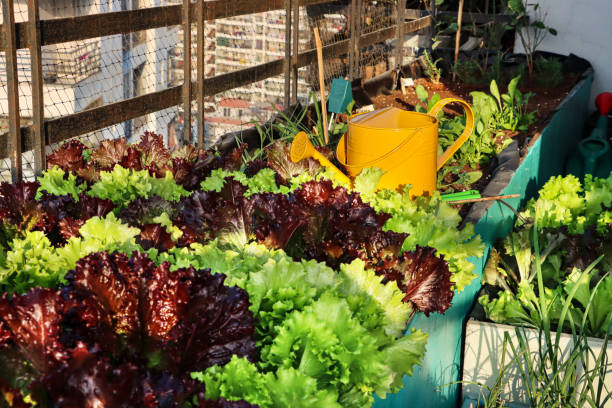The busy buzz of pollinating bees is a sound most of us associate with summer. If you live in temperate regions of Australia, you may start to notice fewer insects as the weather gets colder. Across most of the continent, however, some flower-visiting insects are active all year round – and some are more common in cooler months.
Planting winter-blooming flowers is a great way to support beneficial garden insects. Now is the perfect time to start planning your pollinator-friendly winter garden.
Flowers are an important source of food for insects such as bees, butterflies, wasps and hoverflies. Sugary nectar is an important source of carbohydrates, while pollen packs a powerful protein punch.
Planting flowers also attracts and sustains predatory insects. This can help keep pest species under control, meaning less need for pesticides.
Planting flowers means less need for pesticides. Shutterstock
Know your winter-active insects.
First, let’s look at which pollinators and helpful predators you can expect in your garden in winter. This guide, as well as the below gardening tips, applies primarily to temperate regions of Australia, where temperatures become cool over winter.
The temperate region comprises the areas shown in blue below. It includes the coastal rim that curves from inland Brisbane down to Sydney, Canberra, Melbourne, and Adelaide, as well as Tasmania and the southwest tip of Western Australia.
Australian climate zone map. Bureau of Meteorology
One of the most common pollinators is the Western honeybee (Apis mellifera). This introduced species evolved in cooler regions of the world and tends to be more cold-tolerant than most native bees. They’ll start to leave the hive when the temperature rises above 13degC but are most active above 19degC.
Most native Australian bees prefer warmer temperatures. But a few species, such as reed bees (Exonerua) and the sugar bag bee (Tetragonula carbonaria), make an appearance on warmer winter days when the temperatures reach the mid-to high teens (although the sugar bag bee is usually not found south of Sydney).
Flies tend to be relatively tolerant of cooler temperatures and are the stars of winter pollination. Hoverflies (Syrphidae), in particular, are garden superheroes.
Adult hoverflies feed on nectar and pollen and can pollinate a range of plants. As a bonus, the maggot-like larvae of some hoverfly species are voracious predators, happily eating soft-bodied pests such as aphids.
Read more: It’s bee season. To avoid getting stung, stay calm and don’t swat
Hoverflies, which have similar patterns to bees, are common garden visitors in winter. Shutterstock
Hoverflies are often mistaken for bees or wasps because of their similar yellow and black patterning. The resemblance is not accidental; hoverflies have evolved to mimic the appearance of stinging wasps and bees. Don’t let them fool you – hoverflies cannot prick and are generally harmless.
Some hoverfly species lay their eggs in stagnant water. The resulting larvae are known by the unflattering name “rat-tailed maggots” because they breathe underwater through a long, thin siphon that resembles a tail. Don’t worry if you find these alien-looking critters swimming in your pond or beneath potted plants – the adults are flower-loving vegetarians who can help with pollination.
Read more: Hidden Women of history: Eleanor Anne Ormerod, the self-taught agricultural entomologist who tasted a live Newt.
Other flies, such as blowflies (Calliphoridae), are also active through the cooler months. Although blowflies are often considered pests, they play an important role in the pollination of some fruits, including avocado and mango, as well as seed production for carrot, celery, and cauliflower.
With the right planting, you can also attract predators such as parasitoid wasps, lacewings, and ladybird beetles. These insects mostly feed on other insects but live longer and produce more offspring when they have access to a sweet sip of nectar.
So now we’ve met our winter pollinators and predators; read on for three ways to support them in your garden.
Blowflies and other pollinating insects can be active in cooler months. Shutterstock
Plant lots of flowers
The easiest – and most beautiful – way to support winter insects is to plant lots of colorful winter-blooming flowers. Winter-loving brassicas such as broccoli, bok choi, and mustard greens produce flowers that are a favorite food of many insects. Letting a few of these veggies go to flower will help support your local beneficial insects.



